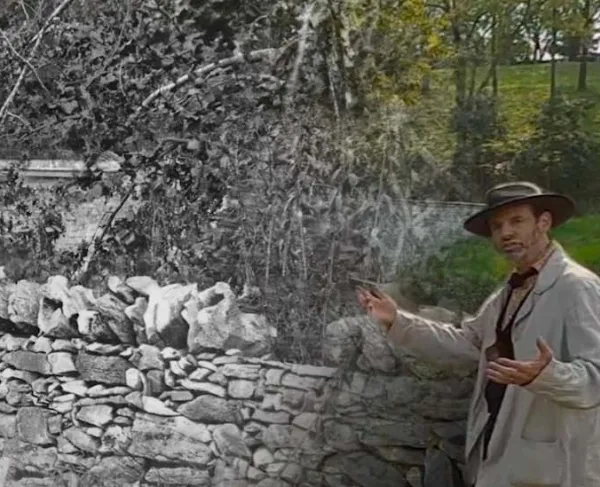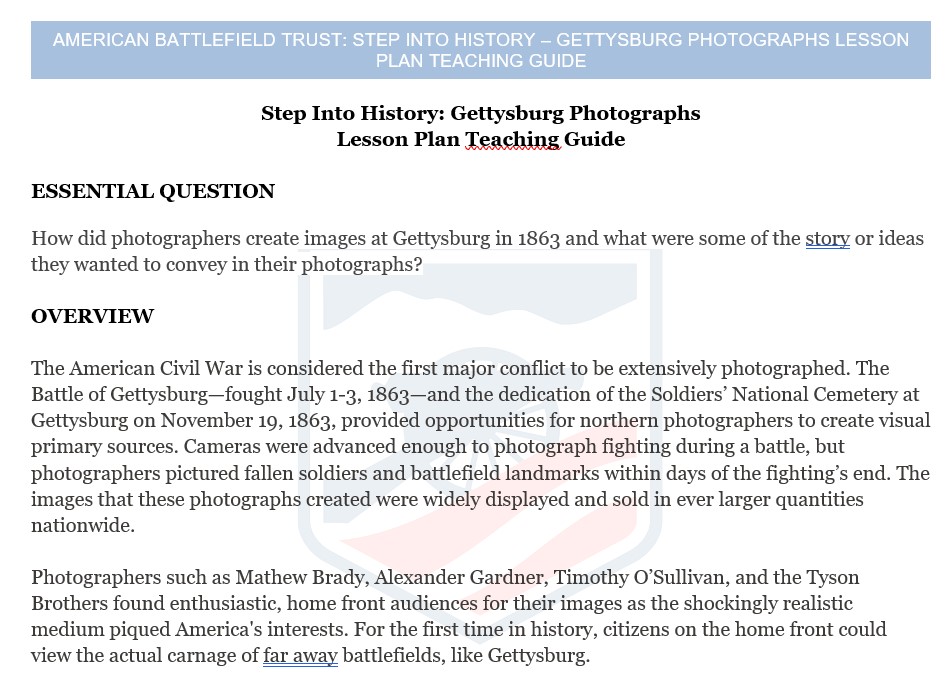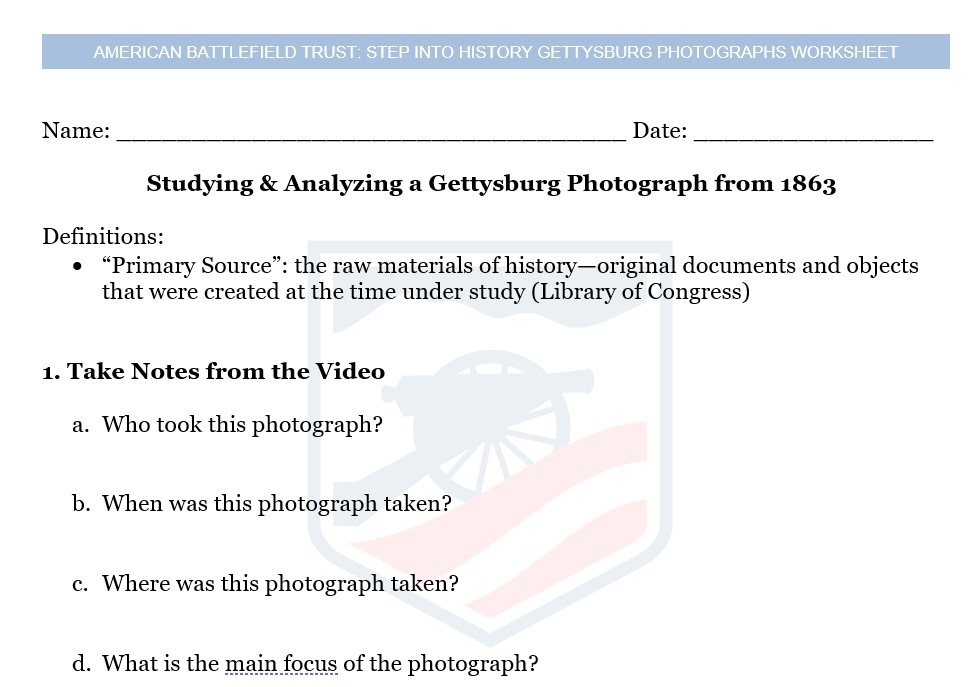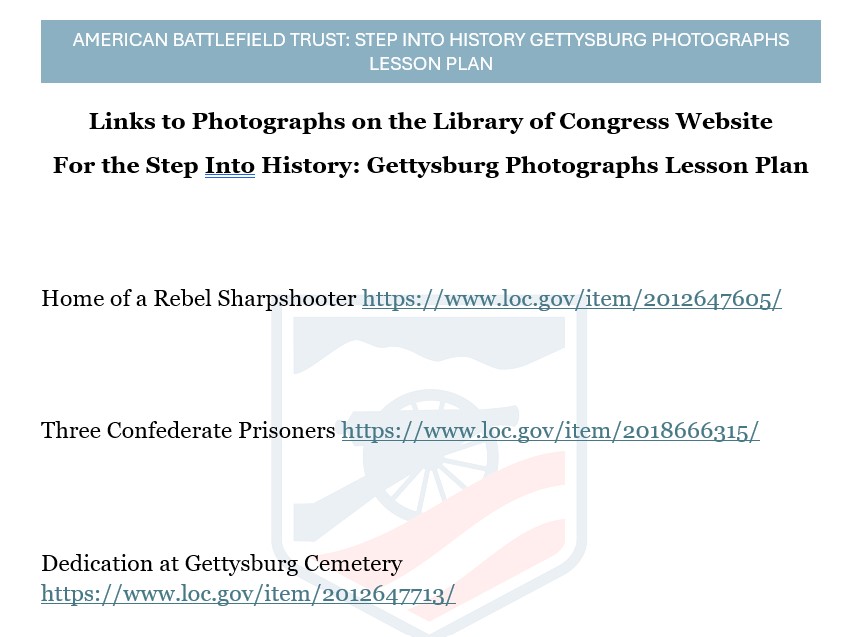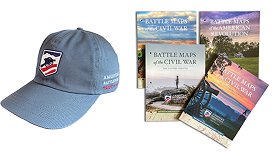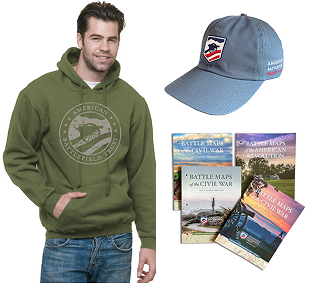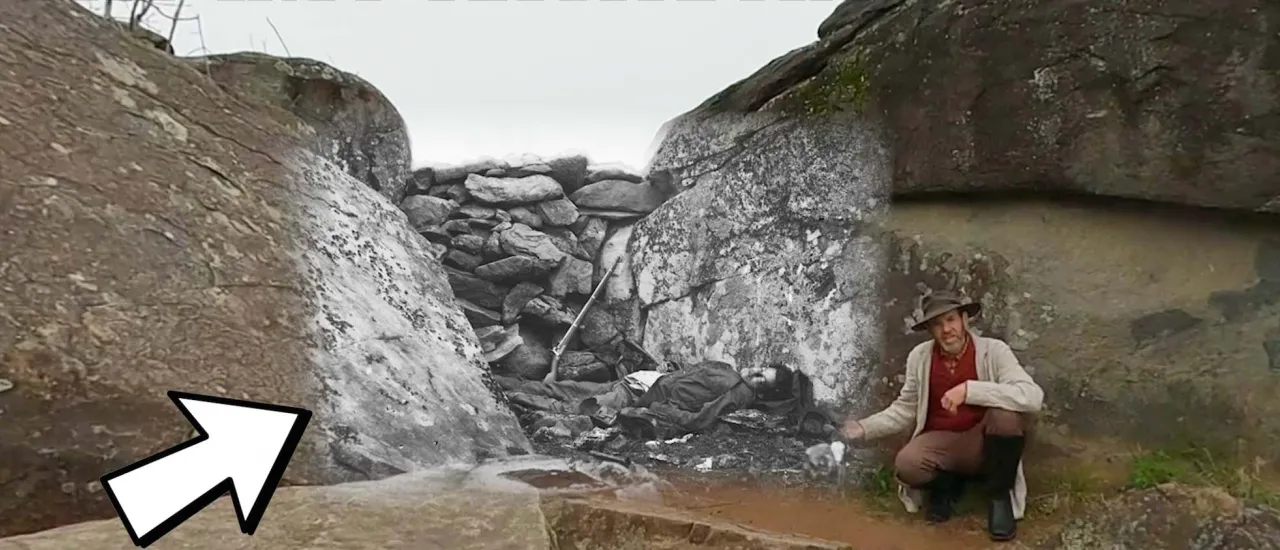
Step Into History: Gettysburg Then & Now Lesson Plan
A lesson plan for use in middle and high school classrooms.
The American Civil War is considered the first major conflict to be extensively photographed. The Battle of Gettysburg—fought July 1-3, 1863—and the dedication of the Soldiers’ National Cemetery at Gettysburg on November 19, 1863, provided opportunities for northern photographers to create visual primary sources. Cameras were advanced enough to photograph fighting during a battle, but photographers pictured fallen soldiers and battlefield landmarks within days of the fighting’s end. The images that these photographs created were widely displayed and sold in ever larger quantities nationwide.
Photographers such as Mathew Brady, Alexander Gardner, Timothy O’Sullivan, and the Tyson Brothers found enthusiastic, home front audiences for their images as the shockingly realistic medium piqued America's interests. For the first time in history, citizens on the home front could view the actual carnage of far away battlefields, like Gettysburg.
This Lesson Plan can be used as a prepared resource by following this curriculum plan which aligns to NCSS and Common Core Standards.
This Lesson Plan's assets can also be used on their own as supplemental resources. The display format is prepared for easy access, exploring, and learning.
Step Into History Learning Module
Upon completion of this lesson, the students will be able to:
1. Knowledge
- Understand some of the influence of photographs during the Civil War
- Discuss how photographers created images at Gettysburg after the battle or during the dedication of the National Cemetery.
2. Comprehension/Application/Analysis
- Examine photographs taken in Gettysburg in 1863 and read a primary source to analyze the stories photographers were trying to capture or tell.
3. Evaluation
- Consider how photography at Gettysburg has shaped our own understanding of the battle and what the Civil War meant.
Check out the Lesson Plan Teaching Guide for more instructions on using the prepared Lesson Plan.
Lesson Plan Primary Source Activity:
- Watch the Gettysburg Animated Map for an overview of the battle and to gain contextual knowledge.
- Distribute the primary source worksheet and point out that photographs are visual primary sources to discover and study.
- Select a Step Into History Video (see options on Lesson Plan Page) to watch as a class or divide students into groups to view different videos; students can use the worksheet questions in Section 1 to take notes from the video.
- Read a primary source related to the Step Into History Video. Suggestions to pair with videos or use “Brady’s Photographers of the Scene of the Conflict” generally.
- The Rebel Sharpshooter at Gettysburg video – “The Home of the Rebel Sharpshooter” primary source
- Confederate Prisoners video – “In Company with an Army Photographer”
- Gettysburg Address video – “Getting a Negative of the Large Crowd at the Cemetery Ground” primary source
- Have students fill out Section 2 of their worksheet from the written primary source.
- It may be helpful for students to view the photograph(s) again while filling out Section 3 of their worksheet.
- Invite the students to share their findings or their reflections from Part 3 in a classroom discussion.
OPTIONAL HOMEWORK/ASSESSMENT/ADDITIONAL ACTIVITIES:
Option 1: Civil War Photography
Learn more about the process of creating photographs during the Civil War. Watch the In4Minutes: Civil War Photography video and/or read the articles 10 Fact: Civil War Photography and Photography and the Civil War.
Have students write a letter as though they are a photographers’ assistant and describe to a friend the process of staging and taking photographs in a Civil War camp or battlefield.
Option 2: Local Photographers in Gettysburg
Common Core State Standards- ELA & History/Social Studies
Grades 6-8
- CCSS.ELA-LITERACY.RH.6-8.6
- Identify aspects of a text that reveal an author's point of view or purpose (e.g., loaded language, inclusion or avoidance of particular facts).
- Integration of Knowledge and Ideas:
- CCSS.ELA-Literacy.RH.6-8.7
- Integrate visual information (e.g., in charts, graphs, photographs, videos, or maps) with other information in print and digital texts.
- CCSS.ELA-LITERACY.RH.6-8.8
- Distinguish among fact, opinion, and reasoned judgment in a text.
- CCSS.ELA-Literacy.RH.6-8.7
Grades 9-10
- Key Ideas and Details:
- CCSS.ELA-LITERACY.RH.9-10.1
- Cite specific textual evidence to support analysis of primary and secondary sources, attending to such features as the date and origin of the information.
- CCSS.ELA-LITERACY.RH.9-10.2
- Determine the central ideas or information of a primary or secondary source; provide an accurate summary of how key events or ideas develop over the course of the text.
- CCSS.ELA-LITERACY.RH.9-10.1
Grades 11-12
- Key Ideas and Details:
- CCSS.ELA-LITERACY.RH.11-12.2
- Determine the central ideas or information of a primary or secondary source; provide an accurate summary that makes clear the relationships among the key details and ideas.
- CCSS.ELA-LITERACY.RH.11-12.3
- Evaluate various explanations for actions or events and determine which explanation best accords with textual evidence, acknowledging where the text leaves matters uncertain.
- CCSS.ELA-LITERACY.RH.11-12.2
- Integration of Knowledge and Ideas:
- CCSS.ELA-Literacy.RH.11-12.7
- Integrate and evaluate multiple sources of information presented in diverse formats and media (e.g., visually, quantitatively, as well as in words) in order to address a question or solve a problem.
- CCSS.ELA-Literacy.RH.11-12.7
Social Studies - National Council for the Social Studies
- Theme 2: Time, Continuity and Change
- Theme 3: People, Places and Environments
- Theme 8: Science, Technology and Society
This Lesson plan
contains the following:
3 Activities | 18 Resources
Audience: Middle school | High school
